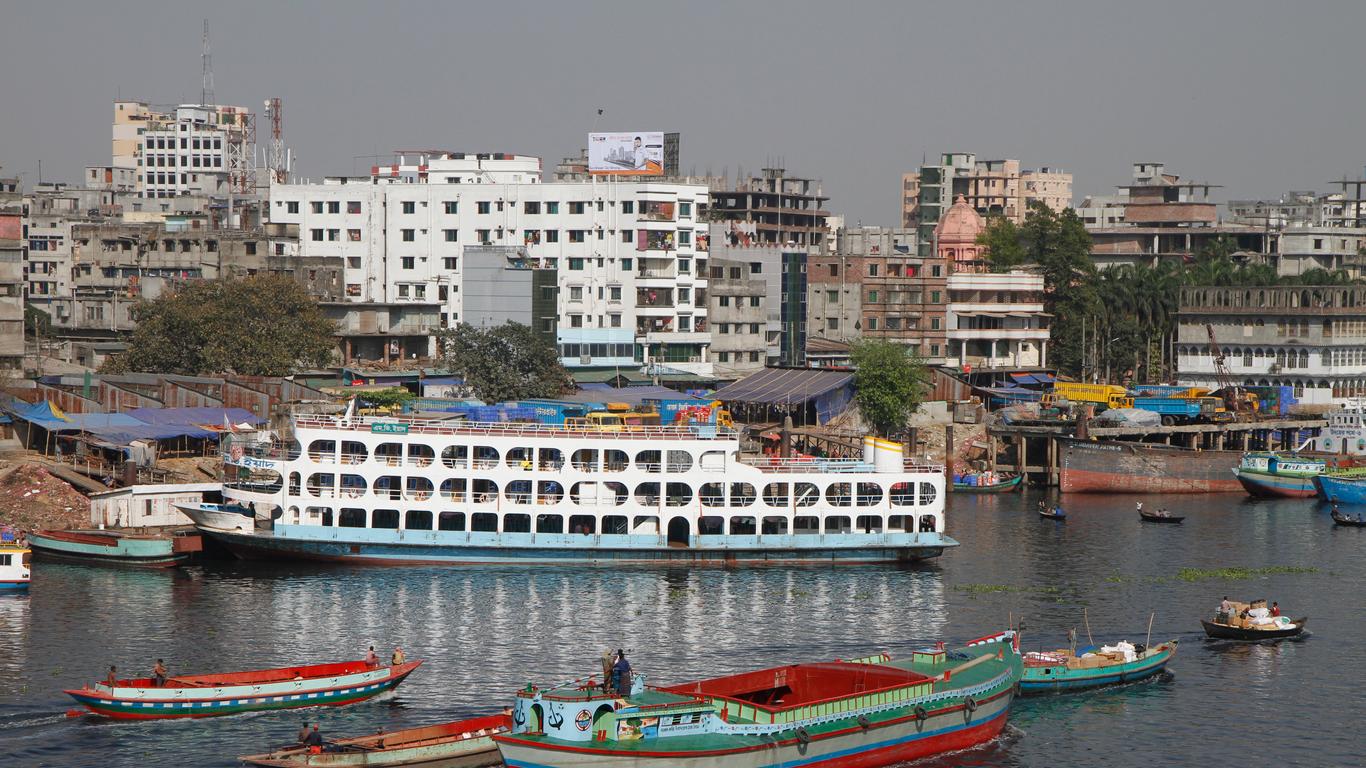
Bangladesh travel guide
Bangladesh Tourism | Bangladesh Guide
You're Going to Love Bangladesh
A combination of bustling cities, mangrove forests and a rich cultural heritage, Bangladesh is a country that offers a diversity of things to do for the adventurous visitor.

What to do in Bangladesh
1. Visit Kantanagar Temple
This Hindu monument, located in Rangpur and built in 1752, has an impressive collection of terracotta motifs and panels containing stories that depict Bangladesh's rich cultural history.
2. Explore Dhaka
Explore the network of alleys and bustling bazaars in Old Dhaka, visit Ahsan Manxzil, with its Indo-Saracenic style architecture, or check out Lalbagh Fort, from the 17th century.
3. Go to the Beach
Cox's Bazar, situated on the Bay of Bengal, is a good place to escape the energy of the cities. There are facilities, such as hotels and restaurants, in Cox's Bazar that are geared towards tourism.
4. Travel by Boat
Take the Rocket, a paddle steamer that travels along the Brahmaputra River between Dhaka and Morelganj, for a trip that allows you to see the way of life along the rivers in Bangladesh.
5. Visit a Tea Estate
Head to Sylhet Division and visit some of the tea estates for which Bangladesh is renowned. The most popular estates are near Srimangal, a town that is situated among the tea plantations.
When to visit Bangladesh
With its sub-tropical climate and monsoon rains, the best time to visit Bangladesh is between winter and spring, from November to March, when temperatures can range between 48-77°F.
How to Get to Bangladesh
Entry requirements
All foreign visitors must get a visa before their trip. Your passport needs to be valid for at least six months after leaving Bangladesh.
Plane
Shah Jahal International Airport in Dhaka is the main point of entry into Bangladesh and operates services on airlines, such as the national carrier Biman Bangladesh Airlines, as well as international carriers, such as Emirates, Turkish Airlines and Singapore Airlines.
Train
There is a rail link between Kolkota in India and Dhaka that is operated by both Indian and Bangladeshi rail companies. It is also possible to catch the Bandhan Express from Kolkota to Khulna on a weekly basis.
Bus
It is only possible to take a bus from India to Bangladesh as the border with Myanmar is not open to road traffic. Services, such as Shohagh and Green Line, operate on a daily basis from Kolkota to Dhaka.
Popular airlines serving Bangladesh
Where to stay in Bangladesh
Accommodation in Bangladesh ranges from budget to high-end hotels in the major cities of Dhaka and Chittagong, and resorts at Cox's Bazar. Standards of accommodation tend to be better in places of touristic interest, such as Cox's Bazar, Sylhet and Dakha, while the international chains in the cities are geared towards business travelers rather than tourists.
Where to stay in popular areas of Bangladesh
Most booked hotels in Bangladesh
How to Get Around Bangladesh
Public Transportation
A public bus network serves the major cities. These buses are often crowded, and alternatives exist in the form of rickshaws and taxis. Rickshaws can be found throughout Bangladesh and are used during the day in preference to taxis, with fares starting at around 30 BDT (0.30 USD).
Trains
Bangladesh Railway operates an Intercity network throughout the country. The trains have a choice of first, second or third-class travel.
Bus
There is the option to catch local buses between cities. While these run frequently, they are often overcrowded and not as comfortable as the intercity coach services operated by companies, such as Soudia, Green Line and Hanif.
Car
Self-drive rental cars are not readily available in Bangladesh and it is advisable to rent a car with a driver if you wish to travel around the country by car.
Plane
Domestic flights are operated between the cities of Bangladesh by the national airline Biman Bangladesh Airlines, and the privately owned Novoair and US-Bangla Airlines. Schedules operate regularly between Dhaka, Cox's Bazar, Sylhet, Rajshahi and Chittagong.
The Cost of Living in Bangladesh
Credit cards are generally accepted in hotels, restaurants and stores in the capital but are not as widely used in other parts of Bangladesh. ATMs are becoming increasingly common in the bigger cities, although not all of them accept Visa or Mastercard. A gallon of milk and a dozen eggs will cost around 360 BDT (4.20 USD) in a grocery store. Eating out will be cheaper than buying groceries, with a meal per person in a local inexpensive restaurant costing around 150 BDT (1.75 USD).